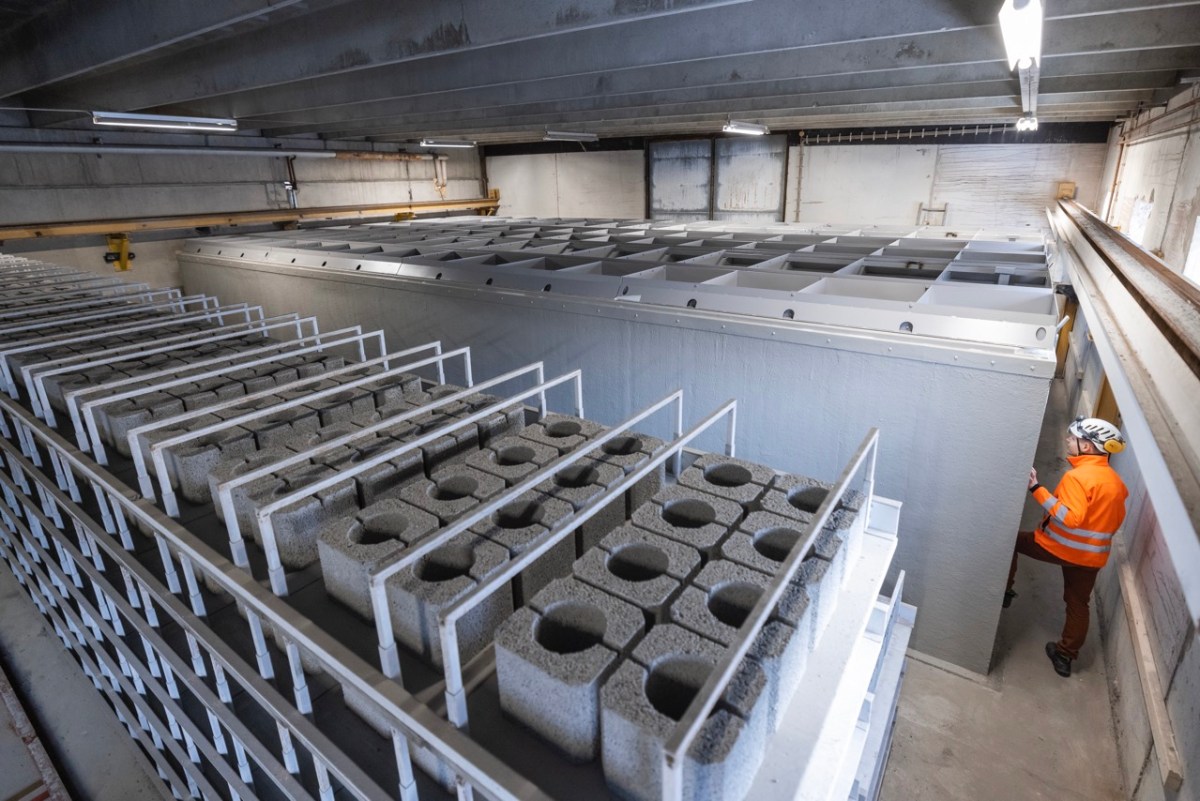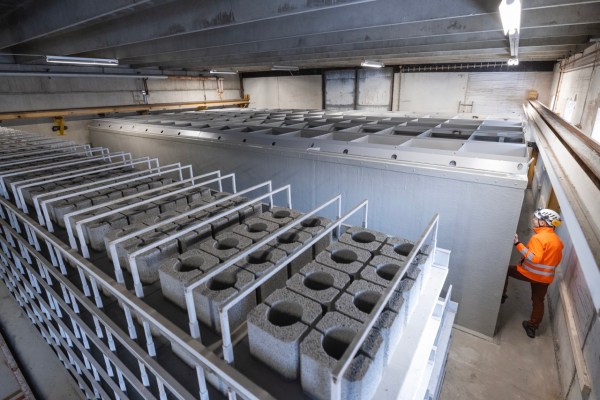When life gives you carbon, make Carbonaide


Concrete. Ubiquitous. A mainstay of the construction industry — over 10 billion cubic meters of concrete are used every year. And also responsible for up to 8% of CO2 emissions — one ton of ordinary Portland cement creates somewhere between 800 and 900 kilograms of CO2 emissions. Finnish startup Carbonaide has just raised €1.8 million (~$1.9 million at today’s exchange rate) in seed funding to knock down concrete’s carbon emissions but not the construction industry.
“Our goal at Carbonaide is to create a more sustainable future with cutting-edge tech that doesn’t just reduce the carbon emissions of construction materials like concrete, but that traps more CO2 than they emit throughout their lifetime,” explains Tapio Vehmas, Carbonaide’s CEO. “It is very natural that the constructed environment becomes a CO2 sink as it is the largest volume of man-made material.”
Carbonaide’s process binds carbon dioxide into precast concrete using an automated system at atmospheric pressure. By reducing the quantity of required cement content and mineralizing CO2 into the concrete itself, Carbonaide believes it can halve the carbon dioxide emissions of traditional Portland cement concrete. If it can introduce industrial waste products, for example, industry slag, green liquor dregs, and bio-ash into the process, it has the potential to produce concrete with a negative carbon footprint.
The next step for Carbonaide is to scale the technology into a production line at its factory in Hollola, Finland, which is where this seed funding round comes in.
“The goal for this funding round is to scale the technology into an industrial-scale pilot factory. With the funding, we can implement the technology into a precast concrete production line that allows carbon curing as a part of the industrial process,” says Vehmas. “When we have done that, we will know exactly the cost structure and needed parameters for effective curing,” because it does need to add up.
“Can we develop technical solutions that also make sense commercially? Low-carbon products have to have a lower price than normal products — otherwise, we can’t be sure that our technology will prevail,” says Vehmas.
Carbonaide has calculated that a fully operational chain could mineralize up to five tons of CO2 per day and increase production by 100-fold of its carbon-negative concrete products, but it’s not just about making this type of concrete industrially scalable, though. Carbonaide also needs to bring the naturally conservative construction industry with it.
“The technology must fit in perfectly — otherwise, it won’t make a change,” says Vehmas. The industry is very conservative, but there is a good reason for that. We build structures that are meant to last, and by being conservative, we can ensure that they will remain in the future.” It’s easy to say that if something isn’t broken it doesn’t need to be fixed, but Vehmas recognizes how the carbon footprint of concrete is breaking the Earth, and it does need to be fixed: “I want to see how a low-carbon industry can become a reality in highly conservative markets. If we can make this happen, maybe our generation will have some hope to pay our carbon debt for future generations.”
Importantly, Vehmas has the experience in the construction industry to bring with him on this lower carbon quest, and he believes that the investment that Carbonaide has raised validates both its necessity and viability.
“I also have 20+ years of experience working with concrete, meaning I have dealt with industry my whole adulthood. I basically live and breathe concrete. That helps a lot when introducing new technology into a highly conservative industry,” says Vehmas. He added that: “This investment is a sign of good progress for us because we’ve received the support and backing of players in the industry already.”
Backing for Carbonaide comes from Lakan Betoni and Vantaa Energy, which led the seed funding. The round was completed with public loans and in-kind contributions from Business Finland and other Finnish concrete companies and strategic investors.
The concrete and energy companies supporting Carbonaide are doing so in more ways than just financially. They are also able to provide CO2 for Carbonaide’s processes, because believe it or not, while too much carbon dioxide is fizzing its way into the atmosphere, the captive kind that we need for everything from concrete to soda is in short supply.
If Carbonaide’s pilot factory goes to plan, Vehmas hopes that it can have a planet-saving impact on the construction industry.
“After the piloting, our goal is to commercialize the technology. We want to make this process easy to implement by packing the technology into a modular unit that is easy to install and enables easy implementation of the technology on-site,” says Vehmas. “If everything goes as I dream, our technology will start a process where the constructed environment becomes a carbon sink in the future, not a source of massive emissions.”


